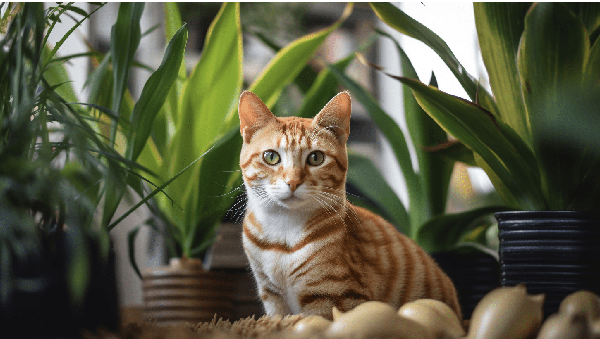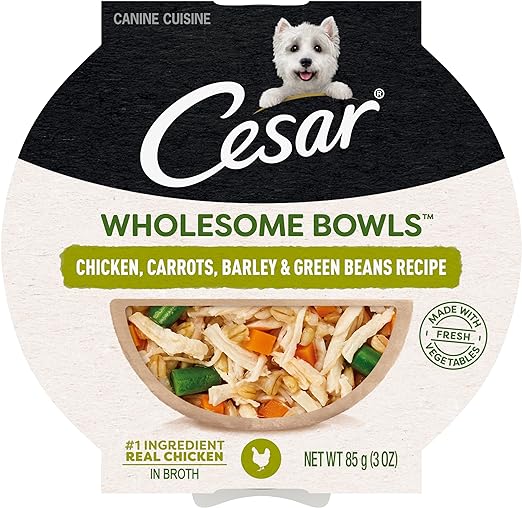You just got a new snake plant to liven up your home. But before you place that beautiful, green décor around your house, you need to ask yourself one very important question if you have a cat: is my new snake plant toxic to cats? As a fellow cat owner and plant lover, I’ve got you covered. In this article, I’ll walk you through everything you need to know if you’re wondering “are snake plants toxic to cats?” Get ready to find out as we dive into why these common houseplants can cause Kitty some problems, what signs to watch for, and how to treat and prevent any future issues. Let’s get growing!
Are Snake Plants Toxic to Cats? The Short Answer
The short answer to this question is, yes—snake plants (Sansevieria trifasciata) are indeed toxic to cats. Why are snake plants toxic to cats, and what are signs of snake plant toxicity in cats? Keep reading to find out why snake plants are dangerous for cats and what symptoms to watch out for.
Why Are Snake Plants Toxic To Cats?
Snake plants, also known as mother-in-law’s tongue or golden bird’s nest, contain saponins, toxins that can make cats sick. Cats usually get sick after chewing on the leaves. While most cats will only have mild symptoms, the toxins can cause more severe illness. Even though cats usually recover fully, call your vet right away for advice. The Pet Poison Helpline can also help, especially after hours or if you can’t reach your vet.
Symptoms of Snake Plant Poisoning In Cats
The most common symptoms of snake plant poisoning in cats are:
- Nausea, vomiting and diarrhea
- Lethargy and loss of appetite
- Swollen mouth or throat
- Drooling
- Stomach pain
Symptoms can range from mild to severe depending on the cat. Seek vet care immediately if your cat shows any symptoms.
Treating Snake Plant Toxicity in Cats
At Your Veterinary Clinic
Your vet will evaluate your cat and determine the best treatment. Options may include:
- IV fluids for dehydration
- Medication for nausea and stomach upset
- Pain medication if needed
At-Home Support
Monitor your cat closely and follow your vet’s recommendations. Provide extra love and care. The treatment and recovery time will depend on the symptoms and severity.
Keeping Your Cat Safe From Snake Plant Toxicity
The best way to prevent snake plant poisoning in cats is by removing the plant from your home. You can also:
- Give the plant to a non-pet household. Snake plants make great gifts!
- Place the plant in an area your cat cannot access, such as a hanging planter.
- Apply double-sided tape or aluminum foil around the base of the plant. Cats dislike the feeling on their paws.
- Spray the plant with a pet repellent spray, available from pet stores. Reapply regularly as directed.
- Keep your cat indoors to prevent access to outdoor plants.
By taking some simple precautions, you can keep your cat safe from the dangers of snake plants and other household toxins. Their health and safety should always come first!
Why Snake Plants Are Toxic to Cats
As a cat owner, you want to do everything you can to keep your feline friend safe and healthy. Unfortunately, some popular houseplants can pose a risk of poisoning or other illness for curious cats. The snake plant, or mother-in-law’s tongue, is one such plant that contains toxins harmful to cats.
The snake plant contains saponin, a chemical compound that can cause gastrointestinal upset, nausea, and vomiting in cats. Saponin is found in all parts of the snake plant, so even a small bite of a leaf or stem can lead to poisoning. While most cases of snake plant toxicity in cats are mild to moderate, it’s still important to monitor your cat closely and contact your vet right away for advice. They may recommend bringing your cat in for treatment like intravenous fluids or medication to control symptoms.
Symptoms of Snake Plant Poisoning
If your cat eats part of a snake plant, watch for these signs of toxicity:
- Vomiting or diarrhea
- Lethargy or weakness
- Loss of appetite
- Drooling or difficulty swallowing
- Mouth irritation or swelling
- Abdominal pain
The severity of symptoms can vary from cat to cat depending on the amount of plant ingested. Seek vet care immediately if symptoms seem severe or don’t improve.
Keeping Cats Safe From Toxic Plants
The best way to prevent snake plant poisoning and ensure your cat’s safety is to remove the plant from areas accessible to your cat. You can:
- Give the plant away to a non-pet owner. Snake plants make attractive gifts!
- Place motion-activated air sprayers, double-sided tape, or aluminum foil around the plant to deter your cat.
- Provide your cat with interactive toys to play with instead of chewing on plants.
- Talk to your vet about behavior modification techniques or medications if your cat has pica (the urge to eat non-food items).
By taking some simple precautions, you can enjoy houseplants without putting your beloved cat’s health at risk. The wellbeing of your feline friend should be top priority, so do what you can to remove any threats of toxicity or illness in their environment.
Symptoms of Snake Plant Poisoning in Cats
If your cat has nibbled on snake plant leaves, watch them closely for signs of poisoning. The most common symptoms are nausea, vomiting and diarrhea. Your cat may drool, seem lethargic or lose their appetite. They could have a swollen mouth or sore throat. Stomach pain, cramps or other gastrointestinal upset can also occur.
The severity of symptoms depends on the cat and how much of the plant they ate. While most cats will recover with treatment, contact your vet right away for advice. They may want to examine your cat, especially if symptoms seem serious or don’t improve. It’s always better to be safe in this type of situation.
At the Vet’s Office
Your vet will evaluate your cat and determine the best course of treatment. This may include:
- Intravenous fluids for dehydration
- Anti-nausea medication
- Pain medication
- Hospitalization in severe cases
The vet will keep your cat for observation and treatment until they recover and are well enough to go home.
Home Care
Once home, continue to monitor your cat closely. Follow any instructions from the vet regarding medication, diet or activity. Provide extra love and care as your cat recovers. Limit access to the snake plant by moving it out of reach or to another area.
To prevent this from happening again, consider giving the snake plant away. A friend without pets would surely appreciate such an attractive plant. You want to keep your curious cat safe and avoid any risk of poisoning or illness in the future.
By watching for symptoms, getting prompt vet care and taking precautions, you can support your cat through snake plant toxicity. Staying informed about plants and other substances that are poisonous to cats will help keep them happy, healthy and out of harm’s way.
Treating Snake Plant Toxicity in Cats
At Your Veterinary Clinic
Treatment of snake plant toxicity can vary from one cat to the next. Your vet is the expert in this situation and will evaluate your cat’s specific needs. Some approaches may include fluids for dehydration or medicine for nausea. Pain meds may help too.
At-Home Support
Watch your cat closely after the vet visit. Care for your cat as
At Your Veterinary Clinic
Treatment of snake plant toxicity can vary from one cat to the next. Your veterinarian is the expert in this situation and will evaluate your feline friend’s specific needs.
Some approaches may include supportive care to manage symptoms, such as IV fluids for dehydration or anti-nausea meds for upset stomach. A vet may also prescribe pain meds if needed.
Monitoring your cat’s symptoms and reaction to any prescribed medications is always important after the vet visit. The amount of at-home care needed and for how long depends on symptoms experienced after eating the snake plant and the vet’s recommendations. Of course, your cat will appreciate extra TLC!
If your cat experienced snake plant poisoning, naturally you’ll want to prevent it happening again. The good news is there are simple things you can do to keep your cat safe and avoid exposing them to toxins.
Gift to a Non-Pet Household
Simply removing the plant from your home removes the threat of snake plant poisoning. A snake plant makes an attractive gift for a friend without pets.
Provide Barriers
Place physical barriers like motion-activated air sprayers, double-sided tape or aluminum foil around the plant. You can also try covering the soil with rocks to make it less tempting.
Offer Alternatives
Give your cat alternatives to redirect chewing behavior, such as interactive toys to play with or catnip toys to chew on. Puzzle toys that dispense treats as your cat plays can keep them entertained for hours.
Supervise and Train
Closely supervise your cat around houseplants and provide correction if they try to chew on leaves. You can also try clicker training by offering a treat when your cat leaves the plant alone. With consistency, they’ll learn to avoid chewing the snake plant.
The most important things are to get your cat checked out if they show symptoms of poisoning, take measures to prevent future exposure and give your furry friend extra love and attention. By being vigilant and proactive, you can keep your cat safe and your snake plant intact.
At-Home Support After Visiting the Vet
Once your cat has been treated for snake plant poisoning by the vet, the care and monitoring you provide at home is critical. The vet will advise you on any medications prescribed for your cat and how often they need to be given. Be sure to follow the instructions carefully and call if you have any concerns.
Your cat may experience side effects for a few days after ingesting parts of a snake plant, so keep a close eye on them. Watch for symptoms like:
- Lack of appetite or energy
- Vomiting or diarrhea
- Swollen mouth or drooling
- Abdominal pain
If symptoms worsen or persist for more than a couple of days, contact your vet right away. They can determine if your cat needs further treatment or hospitalization.
Provide Extra Care and Comfort
Your cat has been through an uncomfortable experience, so providing extra TLC will help in their recovery. Give your cat plenty of affection, brushing and play time. Offer highly palatable, easy-to-digest foods to encourage eating, such as:
- Boiled chicken
- Rice
- Pumpkin puree
- Low-sodium chicken or fish broth
Make sure your cat has constant access to fresh, clean water to avoid dehydration. Limit stress and activity levels while your cat recovers. A quiet, comfortable space away from any other pets is ideal.
Preventing Future Exposure
Once your cat has fully recovered, take measures to ensure they do not have access to snake plants or any other toxic plants again. Some options include:
- Remove any snake plants or toxic plants from your home and yard.
- Place physical barriers like motion-activated air sprayers, double-sided tape or aluminum foil around plants.
- Provide your cat with interactive toys to play with instead of plants.
- Grow cat-friendly plants like catnip, wheat grass or catmint.
- Keep all houseplants out of reach by using high shelves or hanging planters.
By taking precautions and providing the best care for your cat, you can feel confident in preventing future poisoning and keeping them happy and healthy for years to come.
Keeping Your Cat Safe From Snake Plant Toxicity
If your cat has experienced snake plant poisoning, you’ll naturally want to prevent it from happening again. The good news is that there are some simple things you can do to keep your cat safe and avoid exposing them to toxins from a snake plant.
Gift To A Non-Pet Household
By simply removing the plant from your home, you also remove the threat of snake plant poisoning. A snake plant is quite an attractive houseplant, so it could make a perfect gift for a friend or family member that doesn’t have pets. Your cat’s health and safety should be top priority.
Place Barriers Around The Plant
If gifting the plant away isn’t an option, place physical barriers around it to prevent your cat from accessing it. You might try putting double-sided tape, aluminum foil, motion-activated devices or sticky pads around the base of the plant and on nearby surfaces where your cat may jump up. Cats don’t like the feeling of these barriers and will likely avoid the area.
You should also consider moving the snake plant to an area your cat cannot access, such as a room that is kept closed off, a high shelf, or hanging from the ceiling. Any approach that physically separates your cat from the plant should help reduce the risk of poisoning.
Properly Train Your Cat
While training a cat can be challenging, it is possible to teach them to avoid certain plants or areas. Provide your cat with interactive cat toys and scratching posts to redirect their attention away from the snake plant. You should also consistently monitor your cat’s behavior around the plant and say “No” or “Leave it” when they get too close, then reward and praise them when they move away from the area. Over time, the hope is that they will learn to avoid and ignore the snake plant.
Proper training, physical barriers, and environmental changes are all useful ways to help keep your cat safe from snake plant toxicity in the long run. Be vigilant and take action as soon as possible to avoid future incidents and ensure the wellbeing of your feline friend. Their health and safety should always come before keeping any houseplant.
Removing the Snake Plant From Your Home
The simplest way to ensure your cat avoids exposure to the toxins in snake plants is by removing the plant from your home altogether. This eliminates the threat and risk of poisoning, giving you peace of mind that your feline friend will stay safe and healthy.
Gift to a Non-Pet Household
A great option is to gift your snake plant to a friend or family member that does not have pets. Snake plants are attractive, low-maintenance houseplants that can thrive for years, making them a perfect gift. Your cat will surely appreciate you removing this toxic temptation from their environment.
Donate to an Organization
Another idea is to donate your snake plant to an organization in your area that accepts houseplant donations, such as:
- Animal shelters or rescue groups for fundraising
- Nursing homes or hospitals to brighten spaces
- Schools or youth organizations for classrooms, offices or events
Check with groups in your local community to find an organization that would gratefully accept your plant donation. This allows you to rehome your snake plant while also supporting a good cause.
Throw it in the Trash
As a last resort, you may need to simply throw your snake plant in the trash. While not ideal, eliminating the plant from your home is the top priority in this situation to avoid the risk of poisoning your cat. Place the plant in a sealed bag before throwing it in an outdoor trash bin that your cat cannot access.
Any of these options will successfully remove the threat of snake plant toxicity for your cat. Once the plant is out of your home, be sure to thoroughly clean the area where it was kept to remove any fallen leaves or other plant matter. You should also closely monitor your cat for any symptoms in the days following, though they should make a quick recovery with the source of poisoning gone.
The most important thing is keeping your furry family member safe from harm. By removing the snake plant from your home, you can rest assured knowing your cat will not have access to this toxic plant and the dangers it poses. Their health and wellbeing is worth any inconvenience of rehoming or getting rid of your houseplant.
Are Snake Plants Toxic to Cats? FAQs
It’s normal to have questions about snake plant toxicity in cats and how to keep your feline friend safe. Here are some of the most frequently asked questions about snake plants and cats.
What are the symptoms of snake plant poisoning in cats?
Common symptoms of saponin toxicity in cats include:
- Nausea and vomiting: This is one of the first signs your cat may have ingested part of a snake plant.
- Diarrhea: In some cases, a cat may experience loose stools or diarrhea after eating a snake plant leaf or stem.
- Lethargy: Your cat may seem more tired or less active than usual.
- Loss of appetite: If your cat isn’t eating as much as normal, it could indicate stomach upset from the toxin.
- Swollen mouth or drooling: The saponin in snake plants can irritate a cat’s mouth, throat or stomach.
How is snake plant poisoning treated?
Your vet will evaluate your cat and determine the best course of treatment based on their condition and symptoms. Typical approaches include:
- IV fluids: To prevent dehydration from vomiting and diarrhea.
- Anti-nausea medication: To help settle your cat’s stomach and reduce vomiting.
- Pain medication: If your cat seems uncomfortable, a vet may prescribe medication to help with any pain.
- Supportive care: Monitoring, rest, and encouraging your cat to eat and drink once symptoms improve.
How can I prevent my cat from eating snake plants?
The safest way to prevent snake plant toxicity in cats is to remove the plant from areas your cat has access to. Other tips include:
- Place the plant out of your cat’s reach, such as on a high shelf.
- Provide your cat with interactive cat toys to play with instead of the plant.
- Spray the plant with a pet repellent spray, especially the leaves. Reapply as directed.
- Trim off any dead or dying leaves, as these may be more tempting for a cat to chew on.
- Consider donating the plant to a non-pet household or local shelter. Your cat’s safety should come first.
By taking some simple precautions, you can enjoy your houseplants without worrying about your curious cat. But if your cat does eat part of a snake plant, contact your vet right away for advice and treatment. Your cat’s health and comfort should be top priority.




